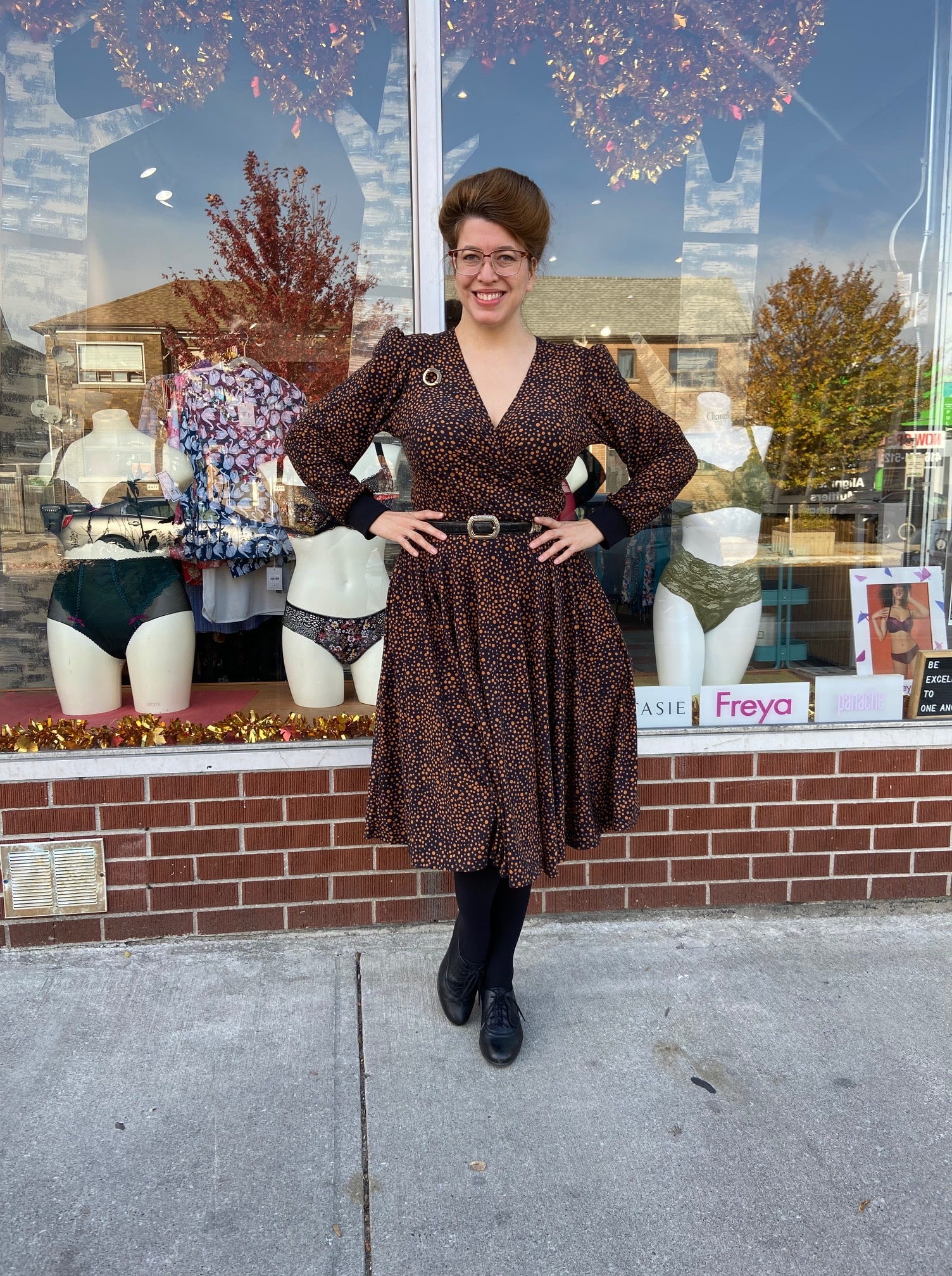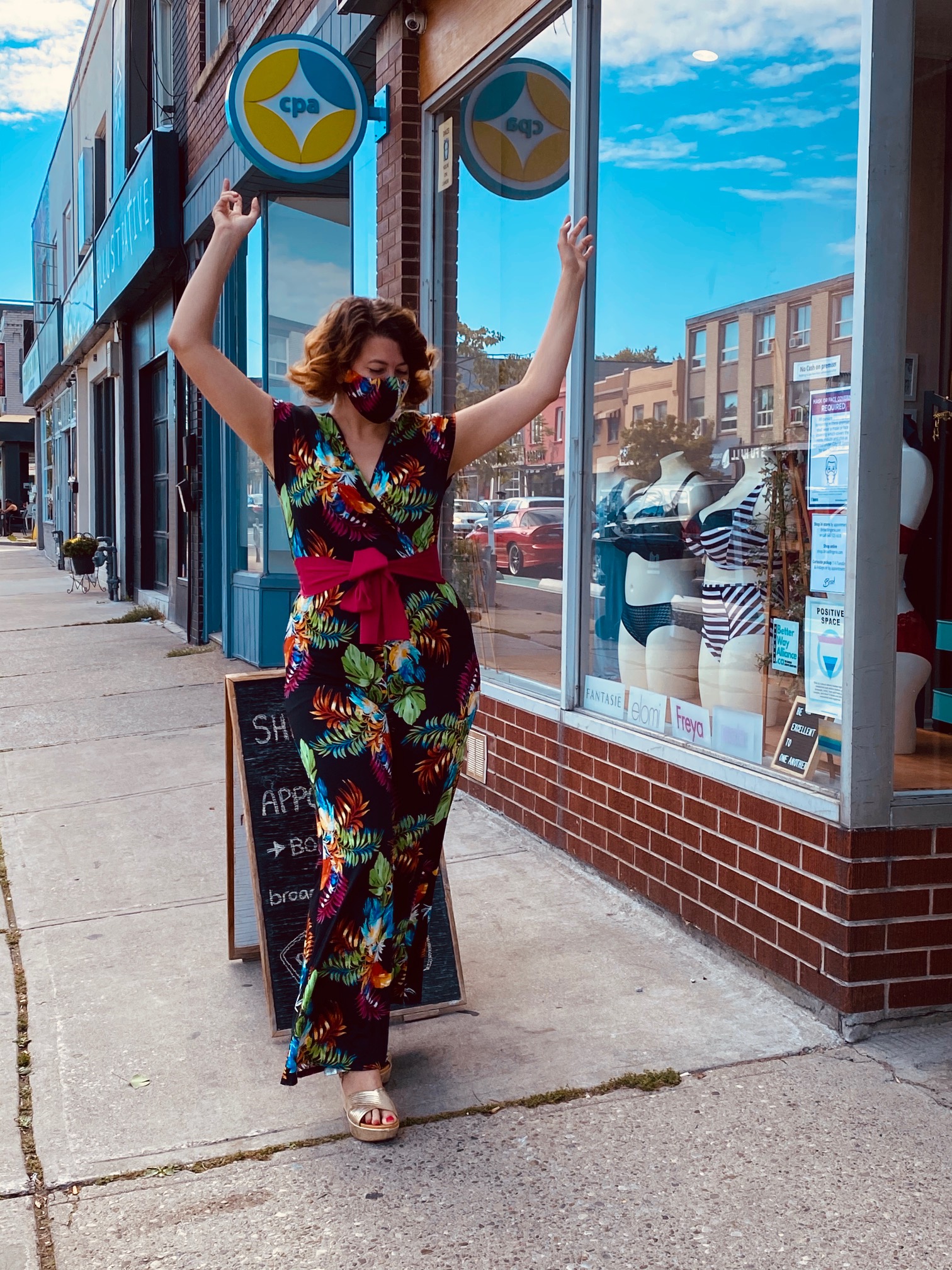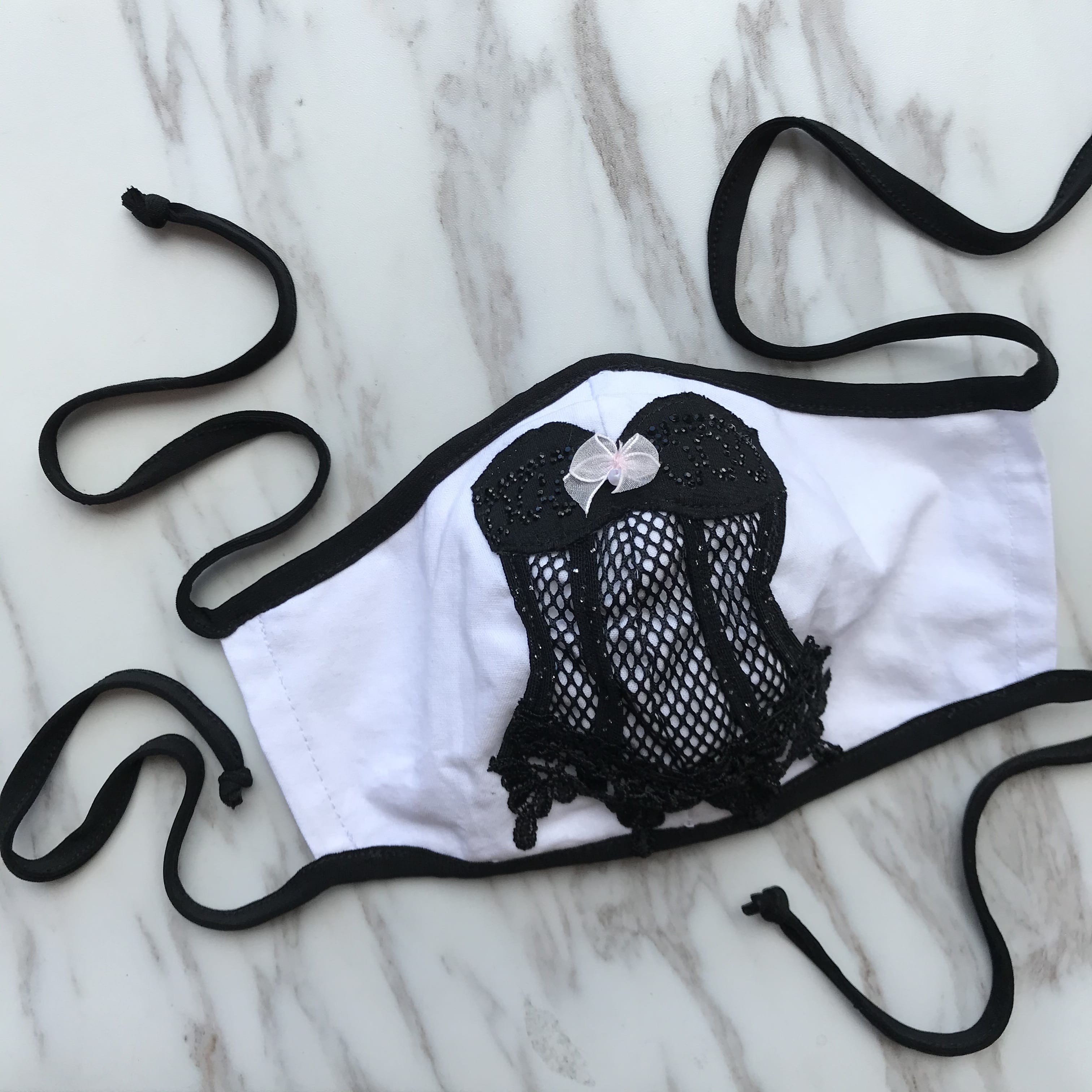“Help! I Have Saggy Breasts!” or, Breast Density: It’s A Thing
Bodies, am I right? They’re always changing, and they never ask permission first. One change we hear a lot about in the fitting room is saggy breasts. In my opinion, “saggy” is kind of a gross word for a totally normal, not-gross thing. (I have a whole rant about the ways we’re trained to police and be disgusted by our own bodies, but that’s for another day…and maybe another blog.) Often what we’re really talking about* is breast density: how firm or soft one’s breast tissue is. So your boobs aren’t “saggy” – they’re soft.
What determines breast density?
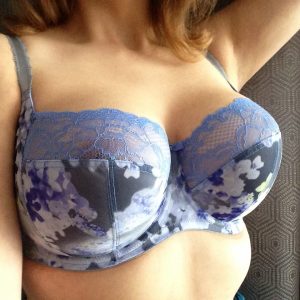
Stretch lace and a higher gore make Panache’s Jasmine a good choice for softer breasts.
There’s a misconception that all young folks have super firm boobs that just stand up by themselves, and that folks of a certain age all have super soft breasts. This isn’t completely true. Yes, age contributes to changes in breast density, but some young people have softer tissue and some older people have firm tissue. As with most things, there’s no one answer. Breast density is determined by a combination of genetics and life changes like aging, pregnancy and nursing, and weight fluctuations.
What makes breasts firmer?
Wearing a bra 24/7 won’t change the density of your boobs or make them more “perky.” Neither will the stuff you see in infomercials, or that fancy cream, or those exercises from Are You There God? It’s Me, Margaret. If you really want firmer breasts, your best bet is probably surgery. As I’m not qualified to give advice on that, I’ll focus more on another option: learning to live with (and maybe even love!) your softer breasts.
Get bras that work for you.
Obviously I’m a little biased, but I truly believe that getting the right bra for your boobs makes it a lot easier to love them. This means getting something that fits, feels comfortable, and looks good to you. There are a few features to keep an eye out for.
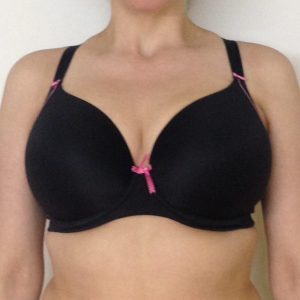
The centre gore is the part where the cups meet. That pink bow marks the spot!
– Soft materials, especially at the cup edge. A common issue for softer breasts is pillowing. This is when the edge of the cup presses into the breast, causing some overflow or “double boob.” Bras with softer cup edges, like stretch lace, are far less apt to cut in. And as a bonus, they’re aces at working with asymmetry! We’ve all got one boob that’s a little bigger than the other, and stretch lace accommodates the bigger side without gaping on the smaller side.
– A higher gore. This is the centre part of the bra, where the cups meet. When this part of the bra is taller, rather than super plunge-y, it gives a little more hold. This is particularly helpful if you have more centre fullness – it’ll keep your breasts securely in the bra cups.
– Lower cut cups. Lots of people with softer breast tissue find that they have extra room in the top of their bra cups. This is especially the case for folks with shallow or full-on-bottom boobs. A bra with less top to fill out will be a better match, and help you feel more secure and supported.
Be patient.
Remember, bra fitting isn’t just about getting the right size. It’s about getting a bra that matches your body’s shape. You may have to try a few different styles before you find what works for you. That’s okay! It doesn’t mean that your boobs are defective, or that the bras are. Every body is unique and ever-changing. With a little patience (and some help from a bra fitter!) you’ll find what works for the body you have now.
*Sometimes when people are worried about “saggy” boobs, they’re worried more about breast placement than density. We talked a bit about placement here, and touched on Cooper’s ligaments here, but if you’d like to read more about this, let us know!

